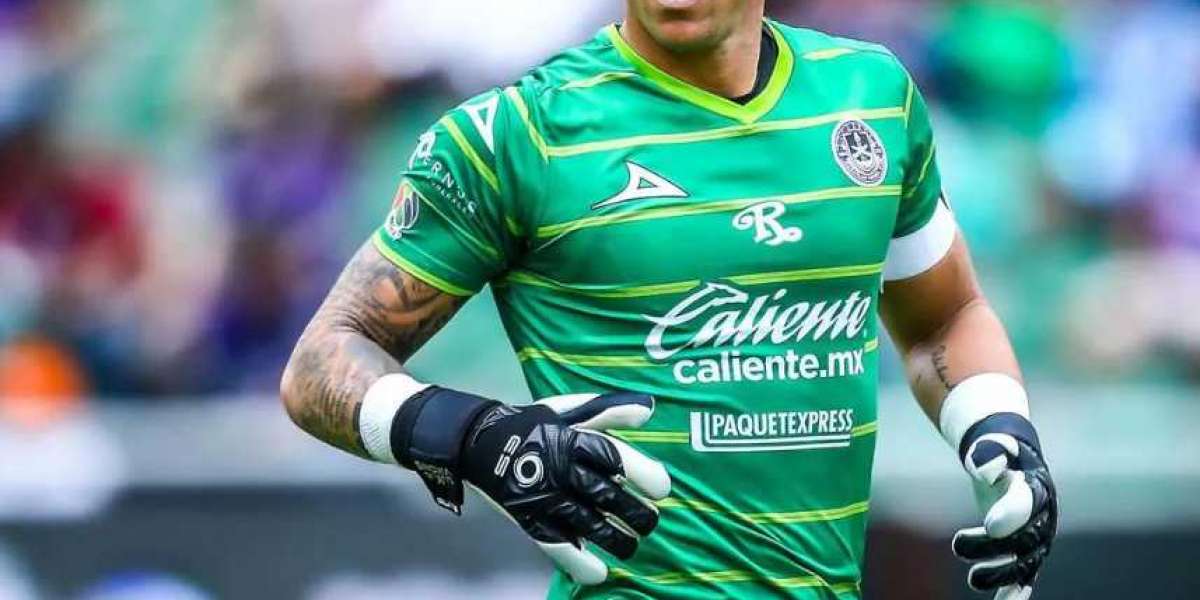In the world of soccer, the goalkeeper holds a unique and critical position. Often considered the last line of defense, a goalkeeper's performance can be the difference between victory and defeat. To excel in this role, goalkeepers must pay close attention to their equipment, and one of the most essential pieces of gear is their gloves. A goalkeeper's gloves are not just a fashion statement; they are a crucial tool that can significantly impact their performance. In this blog, we will explore the key factors goalkeepers should consider when choosing the perfect pair of gloves.

Fit is Everything
The fit of your goalkeeper gloves is perhaps the most important factor to consider. Ill-fitting gloves can lead to discomfort, reduced control, and an increased risk of injury. Goalkeeper gloves should feel snug but not too tight. A proper fit allows for better ball control and a more secure grip.
When trying on gloves, pay attention to the way they feel on your fingers, palms, and wrists. The gloves should fit like a second skin, with enough room for your fingers to move comfortably. Keep in mind that different brands and models may have slightly different sizing, so it's essential to try on several pairs to find the perfect fit for your hands.
Cut Styles
Goalkeeper gloves come in various cut styles, each offering distinct advantages:
Flat Cut: This classic cut style provides a larger surface area for catching the ball, making it a favorite among many keepers. It is comfortable and provides a traditional fit.
Roll Finger Cut: In this style, the latex foam wraps around the fingers, offering a secure and tight fit. Roll finger cut gloves provide excellent ball control and are ideal for keepers with thinner fingers.
Negative Cut: Negative cut gloves have a tighter, more anatomical fit, with the stitching on the inside. This style is preferred by goalkeepers who want a more precise feel on the ball.
Hybrid Cut: Hybrid cut gloves combine elements from various cut styles to provide a balance between fit and control. They are an excellent choice for goalkeepers who want the best of both worlds.
The choice of cut style is a matter of personal preference, so try out different options to determine which one suits your playing style and comfort.
Glove Material
The type of material used in gloves goalkeeper is another crucial factor to consider. The palm of the glove is typically made of latex, and the quality of the latex can significantly affect grip and durability. Latex comes in various grades, including:
Natural Latex: Offers excellent grip but may wear out more quickly, especially on abrasive surfaces.
Hybrid Latex: A combination of natural and synthetic latex, offering a compromise between grip and durability.
All-Weather Latex: Designed to provide good grip in various weather conditions, making them suitable for both wet and dry pitches.
Consider the playing conditions you often encounter and choose a glove with the appropriate latex type to ensure optimal performance.
Cuts and Finger Protection
Finger protection technology has come a long way, and many goalkeeper gloves now feature protective elements to reduce the risk of finger injuries. These may include finger saves, spines, or finger protection technology.
Finger saves are rigid inserts placed in the fingers of the gloves to prevent hyperextension. Spines are removable or flexible elements that can be inserted into the glove to provide additional support. These features are especially important for goalkeepers who want to minimize the risk of finger injuries.
Grip and Weather Considerations
The grip of your goalkeeper gloves can vary depending on weather conditions. If you often play in wet conditions, look for gloves with latex that provides excellent grip in the rain. Conversely, for dry conditions, you can choose a glove with latex that excels in those circumstances.
It's a good idea to have multiple pairs of gloves tailored to different weather conditions, ensuring you always have the right grip for the game.
Durability
While grip and fit are essential, the durability of your gloves is also crucial. High-quality gloves may be more expensive, but they tend to last longer, making them a better investment in the long run.
Consider how often you play and the types of surfaces you play on when evaluating the durability of your gloves. If you play on abrasive turf frequently, you may need gloves with reinforced palms to extend their lifespan.
Budget Considerations
Goalkeeper gloves come in a wide range of prices. While it's tempting to go for the most expensive pair, it's essential to consider your budget. Fortunately, there are quality gloves available at various price points, so you can find a pair that meets your needs without breaking the bank.
Choosing the perfect pair of goalkeeper gloves is a decision that requires careful consideration. Your gloves are an extension of your hands and play a significant role in your performance on the field. Whether you prioritize grip, fit, or durability, there is a perfect pair of gloves out there for you. Take the time to try on different options, consider the cut style, latex type, and finger protection, and factor in your playing conditions to make an informed choice. With the right gloves, you'll be better equipped to make those crucial saves and lead your team to victory.







